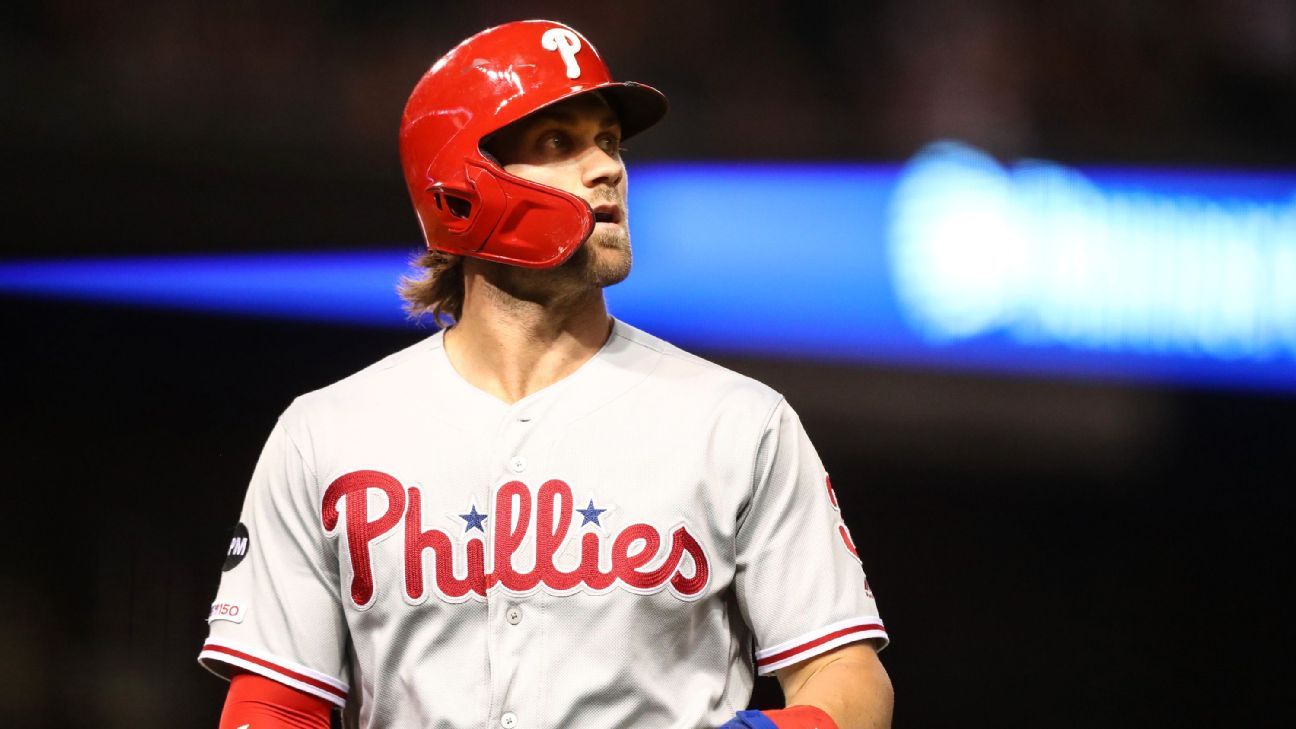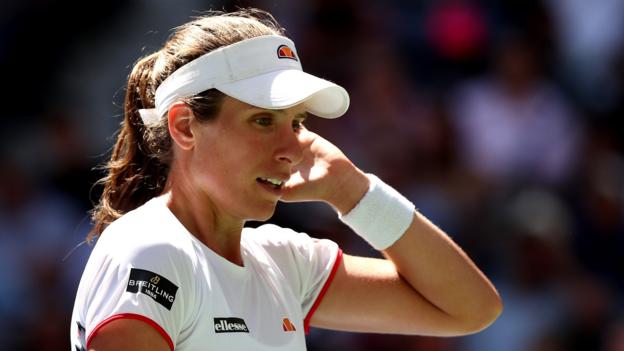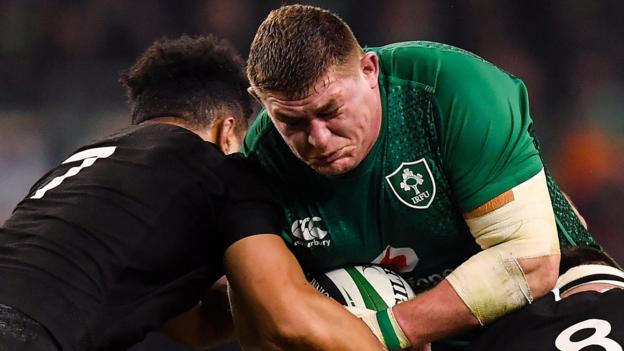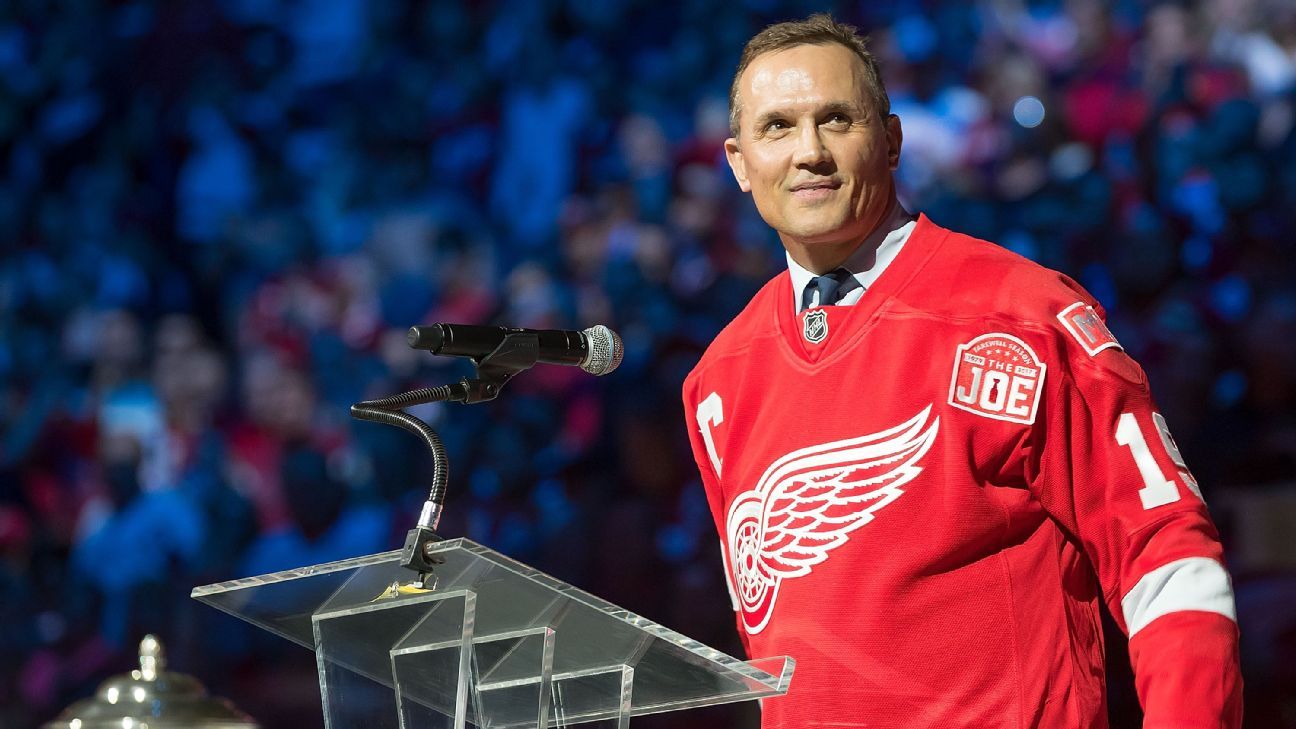When Dylan Larkin made his NHL debut for the Detroit Red Wings in 2015, at age 19, it was a hockey dream. Larkin grew up in Waterford, Michigan, halfway between Flint and Detroit. He played his state championship hockey game at Joe Louis Arena and hoped one day to return as an NHL player. Not only did he come back, but he did it with the iconic spoked wheel on his jersey. He joined a team with players he grew up idolizing: Pavel Datsyuk, Henrik Zetterberg, Niklas Kronwall, Johan Franzen.
"Honestly, it was surreal," Larkin said. "My first year, when we made the playoffs, it was part of the 25-year-streak, and I played with some of my role models growing up. Just being around that energy of a playoff game at Joe Louis Arena, the feeling in the city, and being on the ice with those guys, it was a really cool thing to experience."
Larkin put up 23 goals as a rookie, but Detroit lost its first-round series to Tampa Bay. That summer, Datsyuk announced he was going back to his native Russia. And it became clear that Franzen, who missed nearly all of 2015-16 with concussion symptoms, would not play again.
Once the 25-year-playoff streak ended, the storied franchise closed the book on era. And the beginning of the next one looked bleak. For the past three seasons, Detroit has been in salary-cap hell. It finished with losing records for the first time since 1991 -- five years before Larkin was born. Detroit never had to rebuild in the span since, only reload, and now it was all catching up. The roster lacked enough top-end talent, and enough depth. The Joe shut its doors, and so began a prolonged, sad demolition. The Red Wings christened Little Caesars Arena, one of the glitziest new buildings in the league, but could barely drum up excitement for fans.
"The last few years have been tough to swallow," Larkin said.
"We were the team that was out in February, when you're sitting and have two months of the season left, and two months of games where they don't mean anything," said longtime winger Justin Abdelkader. "We weren't used to it, and that's not where we want to be."
This summer included a glimmer of hope. The Red Wings welcomed Steve Yzerman as general manager. Not only is Yzerman a Hall of Fame player for the Wings, but he comes off an eight-year stint with the Lightning in which -- through bold moves, shrewd drafting and strong development -- he built Tampa Bay into a powerhouse.
"He's a legend here, an icon," said Kronwall, who retired in the offseason, then joined the front office staff. "Then, he comes back. His track record speaks for itself, of what he did down in Tampa. So just getting him back into the organization is great. Let alone being the general manager and guiding this franchise back to where it's supposed to be, and where it should be."
Across the Red Wings organization, there was a common sentiment. Everyone was sad to see Ken Holland go (the longtime GM initially agreed to stay on as an advisor, but then took the GM job in Edmonton). After all, over two-plus decades, Holland led the team to three Stanley Cups and was in the organization for four. Yzerman's arrival also brought cautious optimism that the rebuild will now accelerate.
"It was pretty surprising, I didn't expect it to happen that fast," said goaltender Jimmy Howard. "But also excitement. Even though it was tough to see Kenny go, Yzerman being here has us all pretty excited. Sometimes you need change to move forward."
Yzerman has promised to restore a winning culture but has been overly cautious in assigning a timeline. "I don't know if it will take one, two or five years," Yzerman said. In fact, he evades sharing as many details as possible.
He won't give any clues on what he'd like his team's identity to be -- "To answer your question, yeah, I do know what I'm looking for. Do I want to elaborate on it? Not particularly. Can I? Not particularly," he said -- nor any particulars on how he would categorize the 2019-20 season as a success, besides "everyone in the organization, at all levels, getting better."
Yzerman was quiet in his first summer, signing a depth forward (Valtteri Filppula) and a depth defenseman (Patrik Nemeth) and trading for a depth winger (Adam Erne) from his former team, the Tampa Bay Lighting. It's almost as if he's using this season to suss out what he has, before putting his signature stamp on things. The worst of the cap issues have passed, and next summer, Detroit could have upward of $38 million to spend.
"It's going to take time," Kronwall warned. "In Tampa, he had a number of years where they had high draft picks, and he was able to develop them. What also made them successful was they were able to find these guys to come up every year, and it was like, 'Hey wait, where did he come from?'
"Yanni Gourde is a great example to me. Where did this guy come from? A year or two before that, he had double hip surgery. Now he's doing great, playing in the NHL, and doing it really well. So you don't always need the high-end draft picks to pan out, you need the other guys to blossom, as well."
As a talent evaluator, Yzerman is known for trusting his eye and identifying gems. So it should be no surprise that his first draft selection was a surprise: 18-year-old German defender Moritz Seider, at No. 6 overall. When Seider's name was called, cameras found him in the crowd, eyes agape and hands covering his mouth; it instantly became a gif:
Through camp, there were two things everyone said about Seider. "He's a big kid" -- he clocks in at 6-foot-4, 207 pounds -- who can skate well and has "great hockey sense."
Kronwall said at the team's rookie tournament in Traverse City that Seider stood out. "There were scouts from other teams coming up to us and telling us they were pretty impressed," Kronwall said.
The Red Wings play in the top-heavy Atlantic Division. Besides the Lightning, they have to wade through the defending Eastern Conference champion Bruins, plus the star-studded Maple Leafs. The Panthers made big upgrades this season, including hiring coach Joel Quenneville, and even the Sabres look better than expected.
"Ultimately, all the teams in the league are pretty good," Yzerman said. "I don't think there is a huge difference between the best [and worst] team in the league on any given night. It's the team that plays better. We can win a lot of games by being disciplined and by outworking other teams."
Especially as they build it back up, the Red Wings are looking to develop a strong work ethic. "I don't think we have the skill level to out-skill other teams," Kronwall said. "It's going to come down to hard work. That's something the coaches have been trying to establish at training camp. We need everyone to buy in."
The Red Wings' training camp was bristling with intensity. Drills often involved bodies flying across the ice, and blocking shots (albeit often with sponge pucks).
"This camp, and [Mike Babcock's] first one, in 2005-06, were the most intense camps I've been part of," Howard said.
Yzerman said coach Jeff Blashill -- who had recently signed a two-year extension under Holland that Yzerman honored -- sets the agenda for camp. "Though I'm sure with a new general manager, guys want to make a good first impression," Yzerman said.
Returning players lament that the Red Wings weren't as bad as their record suggested over the past three seasons. "A lot of times, we've beaten ourselves, whether not playing smart with the lead or losing a late one and losing in overtime," Abdelkader said. "We've found more ways to lose games than win them."
Detroit had 23 one-goal losses last season, fourth-most in the NHL. That includes 13 one-goal losses in regulation, second-most in the league (the Canucks had 14).
"If we're healthy, we're always in games, were always right there," Larkin said. "If we could only just get that extra edge."
Larkin, 23, is likely the captain-in-waiting -- Yzerman said he needs time to evaluate before deciding on captaincy -- and the organization feels good about the chemistry he has developed with Anthony Matha, 25, and Tyler Bertuzzi, 24. Yzerman also singles out defenseman Filip Hronek, 22, and center Andreas Athanasiou, 25, as part of the young core he'd like to build around. "Erne is in that same age group, and we'll see if he can take another step," Yzerman said.
"Everything takes time, but there's no doubt that we have really good pieces in play," Kronwall said. "Just the emergence of Dylan Larkin alone. He's a special player. The drive he has -- he does it every night."
Defenseman Mike Green also notes how Larkin sets the tone for the group. "He's got this drive, like when the dog is chasing the bone and playing fetch, he just wants it so bad," Green said.
What Kronwall notices most is how Larkin has evolved. "His first year, he came in and everything went great, and then that second year had a little down year and he was frustrated. He then came into becoming a more two-way center and taking responsibility at both ends of the ice -- it's very impressive.
"Larks, he was able to get a few years with Henrik Zetterberg; I think he learned a ton just being near him, and I think there's a need for that. Now Larks got to watch it up close, now the next generation will get to see him and how he's doing it on a nightly basis. And that's how the tradition will be passed on."

























 Phone: (800) 737. 6040
Phone: (800) 737. 6040 Fax: (800) 825 5558
Fax: (800) 825 5558 Website:
Website:  Email:
Email: 






